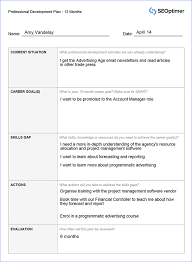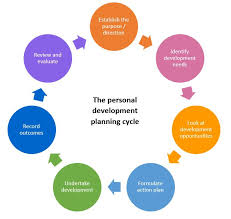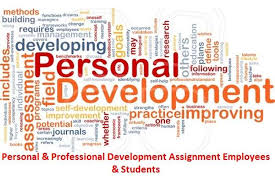The Importance of a Professional Growth and Development Plan
Professional growth and development are essential aspects of a successful career. In today’s competitive job market, continuous learning and improvement are key to staying relevant and advancing in your field. One effective way to ensure ongoing progress in your career is by creating a comprehensive professional growth and development plan.
Setting Clear Goals
A professional growth and development plan starts with setting clear, achievable goals. These goals should be specific, measurable, attainable, relevant, and time-bound (SMART). By defining your objectives upfront, you can create a roadmap for your career progression and track your achievements along the way.
Identifying Strengths and Areas for Improvement
Self-awareness is crucial for professional growth. Take the time to assess your strengths, weaknesses, skills, and knowledge gaps. By understanding where you excel and where you need to improve, you can tailor your development plan to address specific areas that will help you reach your full potential.
Seeking Learning Opportunities
Professional growth often involves acquiring new skills and knowledge. Look for opportunities to expand your expertise through workshops, courses, certifications, or on-the-job training. Continuous learning not only enhances your capabilities but also demonstrates your commitment to personal development.
Networking and Mentorship
Building strong professional relationships is another critical aspect of career growth. Connect with colleagues in your industry, attend networking events, and seek mentorship from experienced professionals. Learning from others’ experiences can provide valuable insights and guidance as you navigate your career path.
Evaluating Progress Regularly
Regularly review and evaluate your professional growth and development plan to ensure you are on track to meet your goals. Adjustments may be necessary along the way based on changing circumstances or new opportunities that arise. Stay flexible and open to feedback as you strive for continuous improvement.
Conclusion
A professional growth and development plan is a valuable tool for advancing your career aspirations. By setting clear goals, identifying areas for improvement, seeking learning opportunities, building relationships, and evaluating progress regularly, you can take proactive steps toward achieving success in your chosen field.
Seven Key Questions Answered: Crafting Your Comprehensive Professional Development Plan
- What are the 5 Ps of professional development?
- What are the five step professional development plan?
- What is your professional development plan examples?
- What are four 4 features of a good professional development plan?
- How do you write a professional growth plan?
- How to write a PDP example?
- What should I put in my professional development plan?
What are the 5 Ps of professional development?
The 5 Ps of professional development are a framework that encompasses key elements essential for personal and career growth. These Ps typically refer to Purpose, Planning, Progress, Persistence, and Professionalism. Purpose involves defining clear goals and objectives to guide one’s professional journey. Planning entails creating a strategic roadmap outlining steps and resources needed to achieve those goals. Progress focuses on tracking and measuring advancements made towards professional development. Persistence emphasizes the importance of resilience and determination in overcoming challenges and setbacks. Professionalism underscores the significance of maintaining high ethical standards, continuous learning, and adapting to industry trends for sustained growth in one’s career. Incorporating these 5 Ps into a professional growth and development plan can help individuals navigate their career paths effectively and achieve long-term success.
What are the five step professional development plan?
A five-step professional development plan typically includes setting clear and achievable goals, identifying strengths and areas for improvement, seeking learning opportunities, networking and mentorship, and evaluating progress regularly. By following these steps, individuals can create a structured roadmap for their career advancement, enhance their skills and knowledge, build valuable relationships within their industry, and track their growth over time. This comprehensive approach to professional development helps individuals stay focused, motivated, and proactive in pursuing their career goals.
What is your professional development plan examples?
When considering examples of a professional development plan, it’s important to tailor the specifics to individual goals and aspirations. A common approach includes setting specific career objectives, such as acquiring a new certification or skill set relevant to one’s field. For instance, a marketing professional might aim to enhance their digital marketing expertise by completing an online course on social media advertising. Another example could involve seeking mentorship from a senior leader within the organization to gain valuable insights and guidance for career advancement. Ultimately, professional development plans should be personalized and focused on continuous learning and growth in alignment with one’s career trajectory.
What are four 4 features of a good professional development plan?
A good professional development plan should encompass four key features to ensure effective growth and advancement in one’s career. Firstly, it should be goal-oriented, with clearly defined objectives that are specific, measurable, attainable, relevant, and time-bound (SMART). Secondly, the plan should focus on continuous learning and skill development, providing opportunities for acquiring new knowledge and enhancing existing competencies. Thirdly, regular assessment and feedback mechanisms should be integrated into the plan to monitor progress and make necessary adjustments along the way. Lastly, a strong professional development plan should emphasize networking and mentorship opportunities to build valuable relationships and gain insights from experienced professionals in the field. By incorporating these features, individuals can create a comprehensive roadmap for their professional growth and success.
How do you write a professional growth plan?
To write a professional growth plan, start by setting clear and specific goals that align with your career aspirations. Identify your strengths, weaknesses, and areas for improvement to tailor the plan to your individual needs. Seek out learning opportunities such as workshops, courses, or mentorship to enhance your skills and knowledge. Develop a timeline with actionable steps to achieve your goals, and regularly evaluate your progress to make any necessary adjustments. Networking with industry professionals and seeking feedback can also provide valuable insights for personal and professional growth. By following these steps, you can create a comprehensive professional growth plan that will guide you towards success in your career.
How to write a PDP example?
When crafting a Personal Development Plan (PDP) example, it is essential to begin by outlining specific, measurable goals that align with your career aspirations. Start by identifying areas where you want to grow and improve, whether it’s enhancing a particular skill set, advancing in your current role, or preparing for future opportunities. Be sure to include action steps detailing how you plan to achieve these goals, such as enrolling in relevant courses, seeking mentorship, or taking on new projects. Regularly review and revise your PDP example to reflect your progress and adapt to changing circumstances, ensuring that it remains a dynamic tool for guiding your professional growth and development journey.
What should I put in my professional development plan?
When creating a professional development plan, it is essential to include specific and measurable goals that align with your career objectives. Identify areas for improvement based on your strengths and weaknesses, and outline strategies to enhance your skills and knowledge. Incorporate learning opportunities such as workshops, courses, certifications, and on-the-job training to expand your expertise. Networking and seeking mentorship can also play a crucial role in your professional growth. Regularly evaluate your progress and make adjustments as needed to ensure you are on track to achieve your professional development goals effectively.



